How to Create a Hospital Management Software: Key Features, Technologies, and Costs
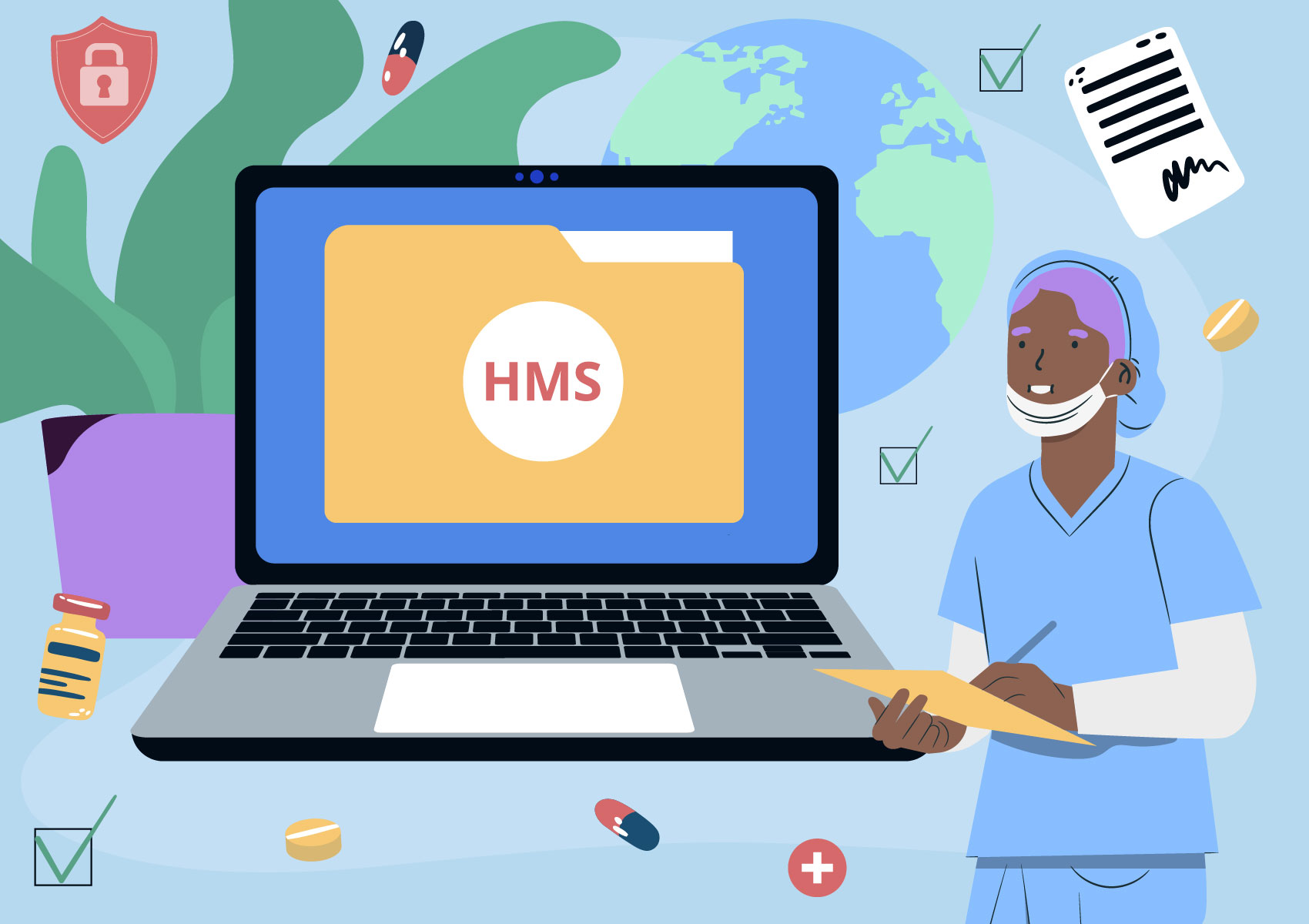
Healthcare providers have always struggled with managing high patient numbers, tracking inventory, allocating finances, and allocating resources efficiently. And now, during the pandemic, it’s especially challenging for medical organizations to keep all of these processes under control and operate effectively. Therefore, hospital management software (HMS) is in high demand today since it helps medical facilities cope with these challenges and helps to better ensure streamlined hospital management.
In this guide, we’ve gathered helpful information you’ll need to know when building hospital management software. Let’s get started!
The main concept of hospital management software
As its name suggests, hospital management software is cloud-based or on-site software created for various healthcare institutions to store, process, and manage medical, administrative, and financial data. Three main categories of users use the HMS:
- Medical staff
- Hospital administration
- Patients
In particular, HMS helps to automate routine tasks, optimize staff coordination, improve communication, distribute the workload, store different types of information, and provide financial and HR management. Moreover, HMS helps healthcare institutions comply with governmental regulations on providing quality patient care, protecting data, and facilitating medical training management. Here is an example of how HMS typically works.
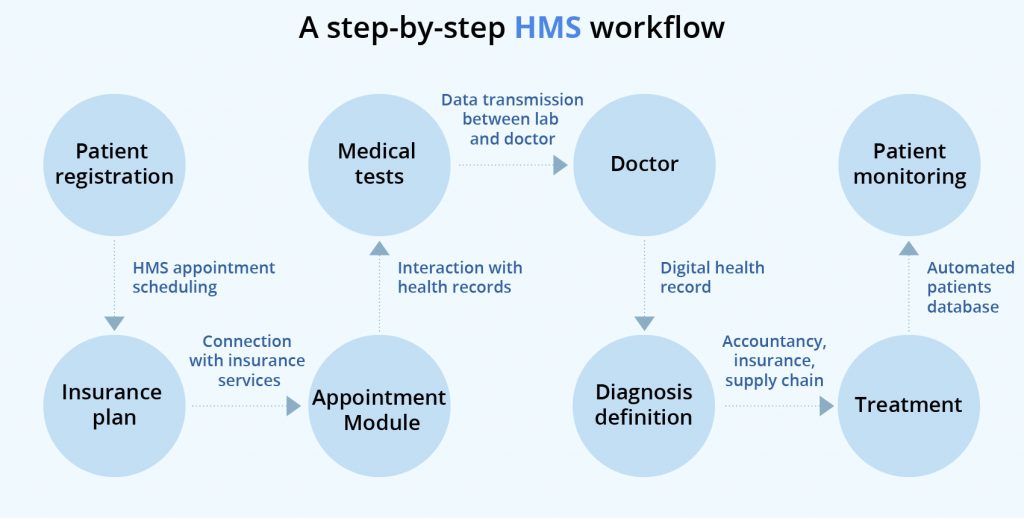
Types of hospital management systems
Hospital management software can be divided into several categories according to its functions. Before you start to build a HMS, let’s learn about its basic types and examples in the market.
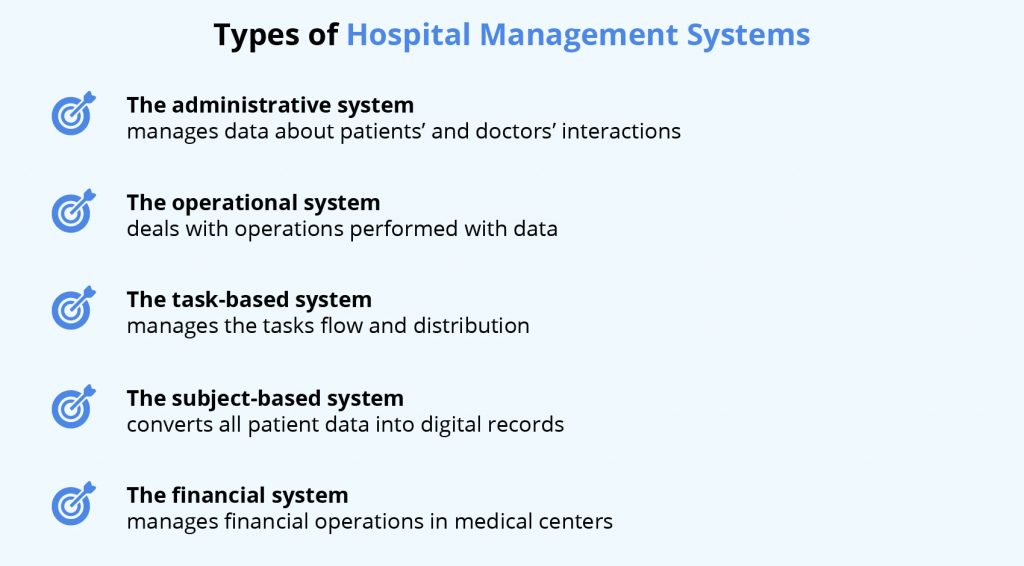
The administrative system
This type of HMS is responsible for gathering, storing, and processing all the information about patients’ interactions with doctors. The patient’s data includes treatment course, medical history, medical assistance, medications, and other pertinent details.
In addition, the administrative HMS analyzes patients’ health records and reports on the effectiveness of a treatment method and overall patient care.
The operational and tactical system
Mistakes in medical data can lead to negative consequences for hospitals and patients. That’s where the operational and tactical hospital system can help. This system aims to classify and structure vital medical information within the covered entity. With the help of this system, healthcare data becomes truly accessible and interoperable at each level of the organization.
It can also detect inconsistencies with medical data in the whole system. But despite the interoperability of information, the operational HMS also features various data access levels for different user statuses.
Task-based systems
Any medical organization has thousands of tasks to perform each day. How to distribute these tasks properly among medical staff? How to control their execution? How do employees know about task details and deadlines? A task-based HMS is an ultimate solution for duties management and supervision. Instead of wasting time and resources on manual tasks distribution, this system can help clinics automatically create and assign tasks to appropriate specialists. After the task is created, workers get notifications with detailed descriptions and timeframe.
Subject-based systems
This type of hospital management software is a medical solution that converts patients’ paper data into Electronic Health Records (EHR) or Electronic Medical Records (EMR). Papers are easy to lose and hard to manage. That’s why subject-based systems are vital for hospitals as they greatly reduce risks associated with paper documents and help manage data properly. In addition, these systems allow sharing, updating, and deleting data virtually.
Financial or billing systems
Finances are another essential side of the hospitals. Apart from administrative, operational, and medical services, healthcare units must cope with billing and insurance operations. Integrating a financial system into a medical organization is vital for its sustainable financial performance. After a patient receives medical services, this system processes the patient’s treatment record and submits it to the patient’s insurance company to facilitate the payment process. Billing systems also record and store all financial information to retrieve it quickly as required.
It will be your decision on what particular type or mix several types of software modules to construct. Let’s move on to learn about the core features required to design a hospital management system.
Essential features to build HMS
Since healthcare is a highly specific industry, building hospital management software requires a diverse array of custom features seldom used in other spheres. HMS functionality can generally be divided into two main directions: the first is oriented on management tasks, while the second focuses on patient care.
Let’s take a closer look into the features you’ll need in a hospital management system.
HMS management-oriented features
- Doctor timetables. This feature allows caregivers to browse their schedules, set appointments, and share timetables with patients.
- Operation room management. This allows staff to schedule and manage the surgical facilities of the hospital and more efficiently allocate resources associated with their use.
- Ward management. This helps caregivers plan, track, and manage the various departments in the hospital.
- Pharmacy management. This helps medical staff monitor medication inventory.
- Food supply management. Hospitals typically control patients’ diets while they are admitted for medical treatment. This module helps cafeteria staff order and prepare meals specific to the needs for each patient.
- Inventory and purchase management. This feature tracks inventory levels of hospital supplies except for medications. For example, it tracks the fuel expenditure for ambulances, water, and electricity consumption.
- Laundry management.
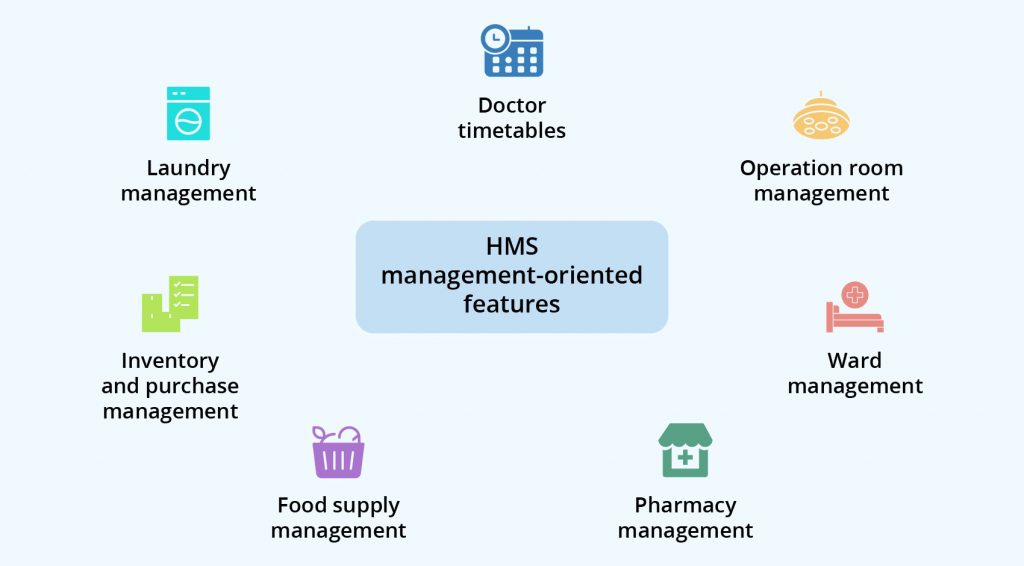
HMS patient-oriented features
- Patient registration. This feature registers patient’s for admittance to the hospital.
- Patient admittance information. This function gathers and stores Electronic Health Records after a patient has been admitted. It also updates and retrieves patient data.
- Patient billing and insurance. This manages patient financial operations, including billing and insurance.
- Emergency care module. This module helps with the fast registration of patients admitted to the ER.
- Pharmacy information for patients. This helps patients order and refill pharmaceutical prescriptions.
- Patient notification. This notifies patients of their appointments, medication times, discharge recommendations, etc. This function may be provided by a separate web or mobile application linked to the hospital management system. The reminder functionality may also be provided using existing messenger apps.
- eRx integrations with e-prescription services.
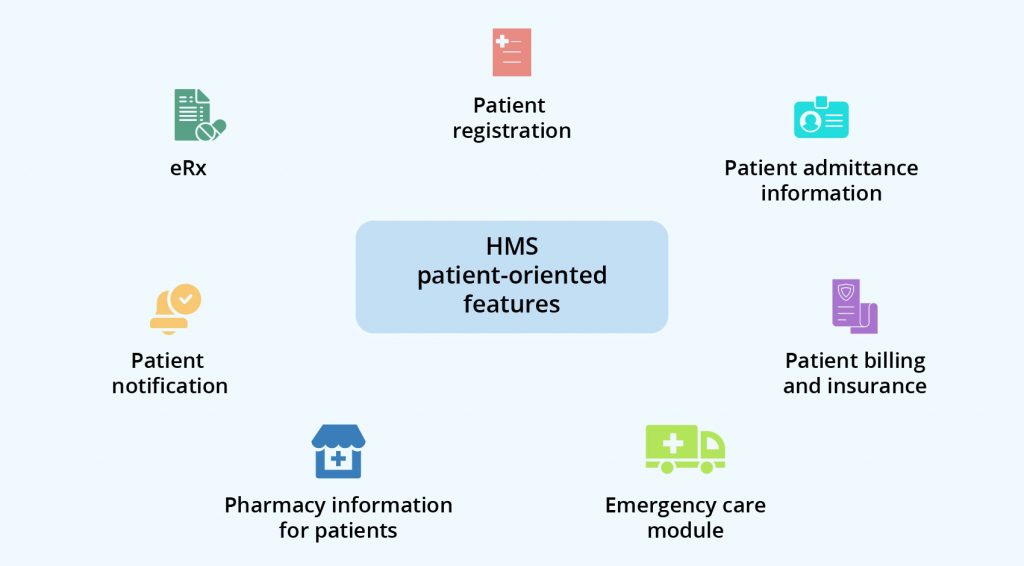
The technical side of HMS
Now that we have summarized the types and features of a hospital management system, we can move on to looking at the tech stack of your future HMS.
We’ve asked our top experts to share the framework, programming languages, databases, and cloud storage technologies needed to create hospital management software.
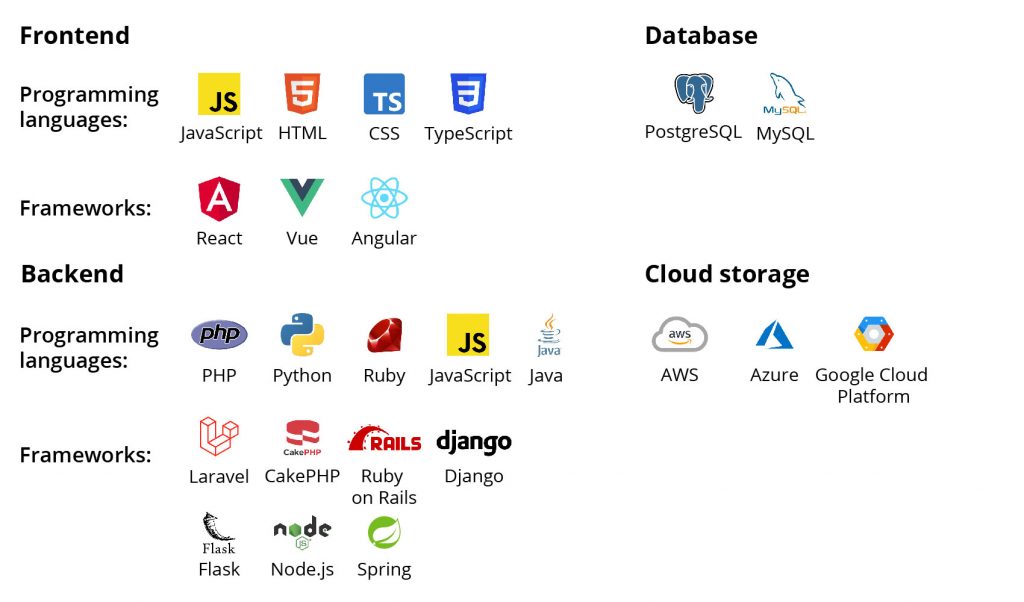
Designing the architecture of hospital management software
After considering everything we’ve mentioned above, you should design your hospital management system architecture. Here are the steps to help you with this:
- First, identify processes you want to facilitate and automate with your hospital management solution.
- Decide on the feature set required to implement these processes.
- Finalize the specific tech stack you’ll need to implement this functionality.
- Identify what platforms you want to create (mobile, web, or cloud.)
- Create a detailed roadmap of your HMS.
- Double-check if your HMS is adapted to the hospital’s IT infrastructure.
- Ensure that you elicited and documented all the requirements from medical staff.
- Work on user interface design and create an intuitive user experience.
- Keep a responsive approach in mind.
- Start small, then scale. Build an MVP to test your product and grow gradually.
Tips on how to develop a hospital management system
And finally, here are our top suggestions to help you build a competitive product and reduce the risk of failures.
Define business needs and goals
Before jumping into the product development phase, define your project’s key objectives. This process is called the product discovery stage, and at Alternative-spaces, we believe it’s crucial to further success. Product discovery aims to investigate your product concept, target audience, and intended market. At this stage, we help businesses set clear goals, design a proper roadmap, and tune streamlined development processes.
To get more details on product discovery processes and deliverables, follow the link below.
Set up security measures
Technological innovation, especially in the health sector, cuts both ways. Keeping patient data online makes it vulnerable to various cyber crimes, but at the same time, HMS protects all records from those threats. To make your software reliable and keep all data in safety, you will want to employ the following security measure in your HMS:
- Implement an access control feature. Role-based access control limits the employees who can access certain information in the system. Each role has their own access level.
- Use valid authentication. This can be biometrics, multi-factor authentication, electronic keys, expiring passwords, and so on.
- Log out those users who aren’t working in the app currently.
- Implement data encryption.
- Use PHI backup to restore data in case of its loss.
- Integrate activity tracking system to detect any suspicious activity in HMS and prevent data leakage.
Meet regulatory compliance and standards requirements
All medical information and healthcare services must comply with governmental requirements and regulations. You will need to consider all these laws and regulations to make your hospital management system legally compliant. We have gathered a list of the essential regulations in US and European healthcare systems below:
- The 21st Century Cures Act
- The Health Information Technology for Economic and Clinical Health (HITECH)
- Health Insurance Portability and Accountability Act (HIPAA)
- Personal Information Protection and Electronic Documents Act (PIPEDA)
- General Data Protection Regulation (GDPR)
- Data Protection Act (DPA)
- The Food and Drug Administration Safety and Innovation Act (FDASIA)
Develop an efficient UX
Hospital management software is a complex system consisting of many modules used by various departments. Doctors, management, patients, and non-clinical specialists will need to interact with an easy-to-use, intuitive HMS.
An intuitive UI/UX design is vital for your future software success. Here are some valuable tips from our specialists to consider when designing a hospital management system.
- Investigate the healthcare industry of the project’s country. Each country has its own set of requirements, standards, and regulations. You will need to learn the ecosystem of healthcare providers, patients, and facilities involved in payment management.
- Conduct UX research. Pay close attention to the medical terminology. Designers act as middlemen between the HMS and users. Hence, knowing the specificity of the industry terminology is a must to relay that knowledge to the users in a comprehensive way.
- Make HMS usability clear. The usability of the hospital management system has to be simple, even for non-tech-savvy users. Don’t overload HMS with complex features and confusing navigation. Try to structure the system logically.
- Keep your end user’s goal in mind. Understanding the target users’ goals, needs, and pain points will drive your design.
And last but not least, choose the right development team before developing your HMS. Your technological partner plays an important role in your startup’s success. Pay close attention to the vendor’s expertise in the healthcare sphere, ask the portfolio to evaluate the approach and results, and read feedback from customers on authoritative sources like Clutch and GoodFirms.
How much does it cost to build HMS?
Providing a precise estimation of the investments you’ll need for hospital management software development depends upon several key factors that contribute to the overall HMS cost:
- HMS feature set
- Software complexity
- The tech stack (frameworks, databases, programming languages, cloud storage, tools, libraries, etc.)
- Software integrations (third-party services, blockchain, AI, IoT, AR/VR, etc.)
- Cooperation model (in-house, outsource, or freelance)
- The development team size
- The development team rate and location
First, let’s consider how many specialists you’ll need to develop an HMS:
- Backend developer: 3
- Frontend developer: 2
- UI/UX designer: 1
- QA engineer: 1
- Project manager: 1
When calculating the cost of building software, we also need to consider the development team’s rate, which may differ significantly from country to country. Below, we compare the five countries’ min and max rates per hour.
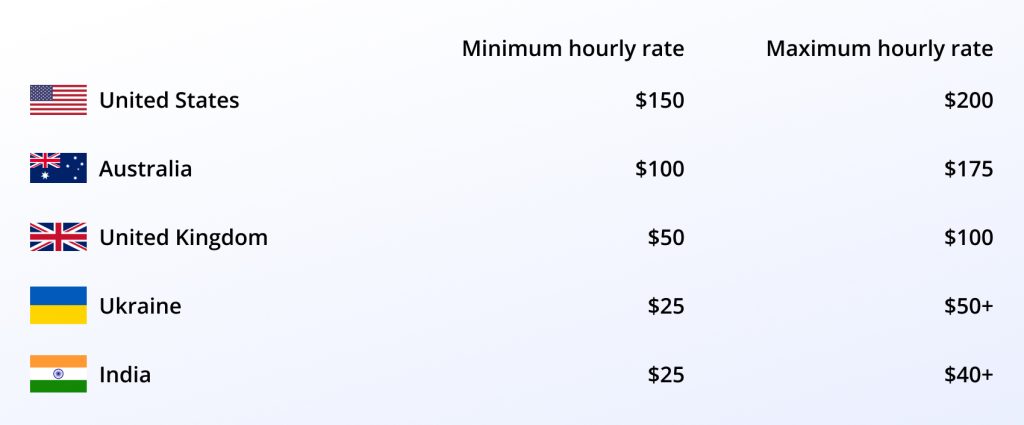
In general, building an MVP of hospital management software can take from three to six months, depending on experience. If you are looking for a detailed estimation of your HMS project, we’re pleased to contact you with our experts and provide an accurate estimate and time frame based on your requirements. Or you can simply use our online cost estimator.
Final thoughts
Hospital management software can bring many advantages to patients and hospitals. It automates routine tasks, enhances better and faster patient care, protects medical information, and helps clinic staff do their job efficiently. The Alternative-spaces team has in-depth expertise in building telehealth solutions and knows that HMS development requires special knowledge and thorough preparation. When dealing with the health sector, it’s crucial to work on the intuitive user experience of HMS, choose the best data security protocols, meet regulatory compliance, and understand the needs of target users.
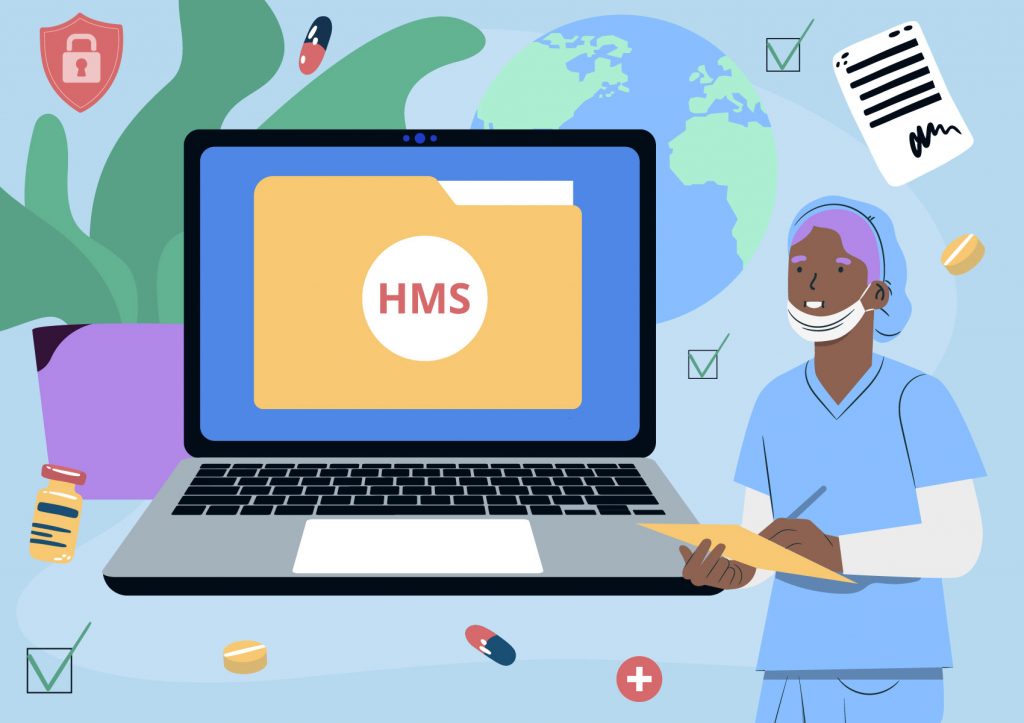
If you’re considering building your hospital management system and looking for an experienced team to take responsibility for the technical side please don’t hesitate to drop us a line. Let’s create an outstanding and competitive hospital management software system together!
Content created by our partner, Onix-systems.
Source: https://onix-systems.com/blog/how-to-create-a-hospital-management-software Home
Home